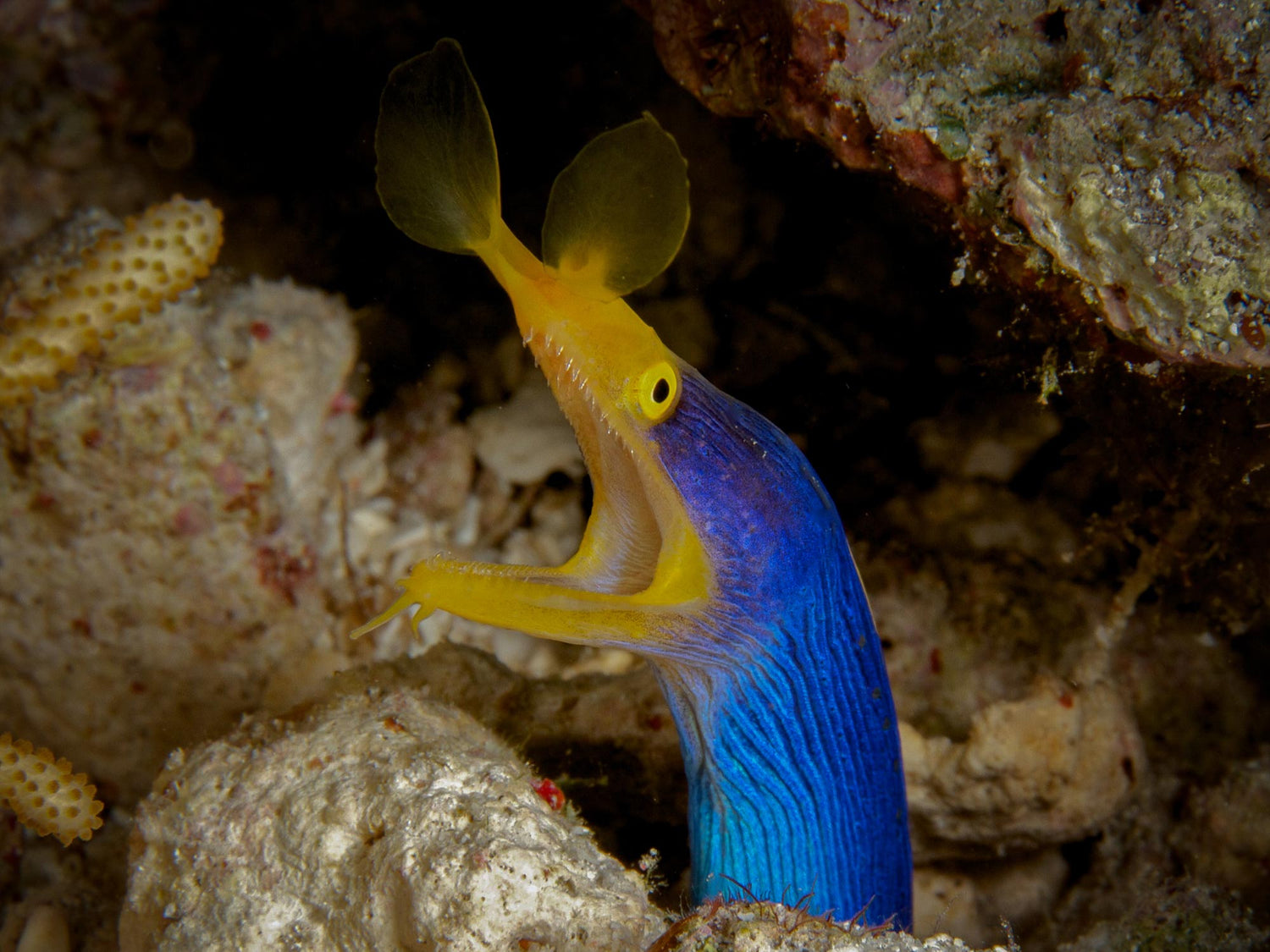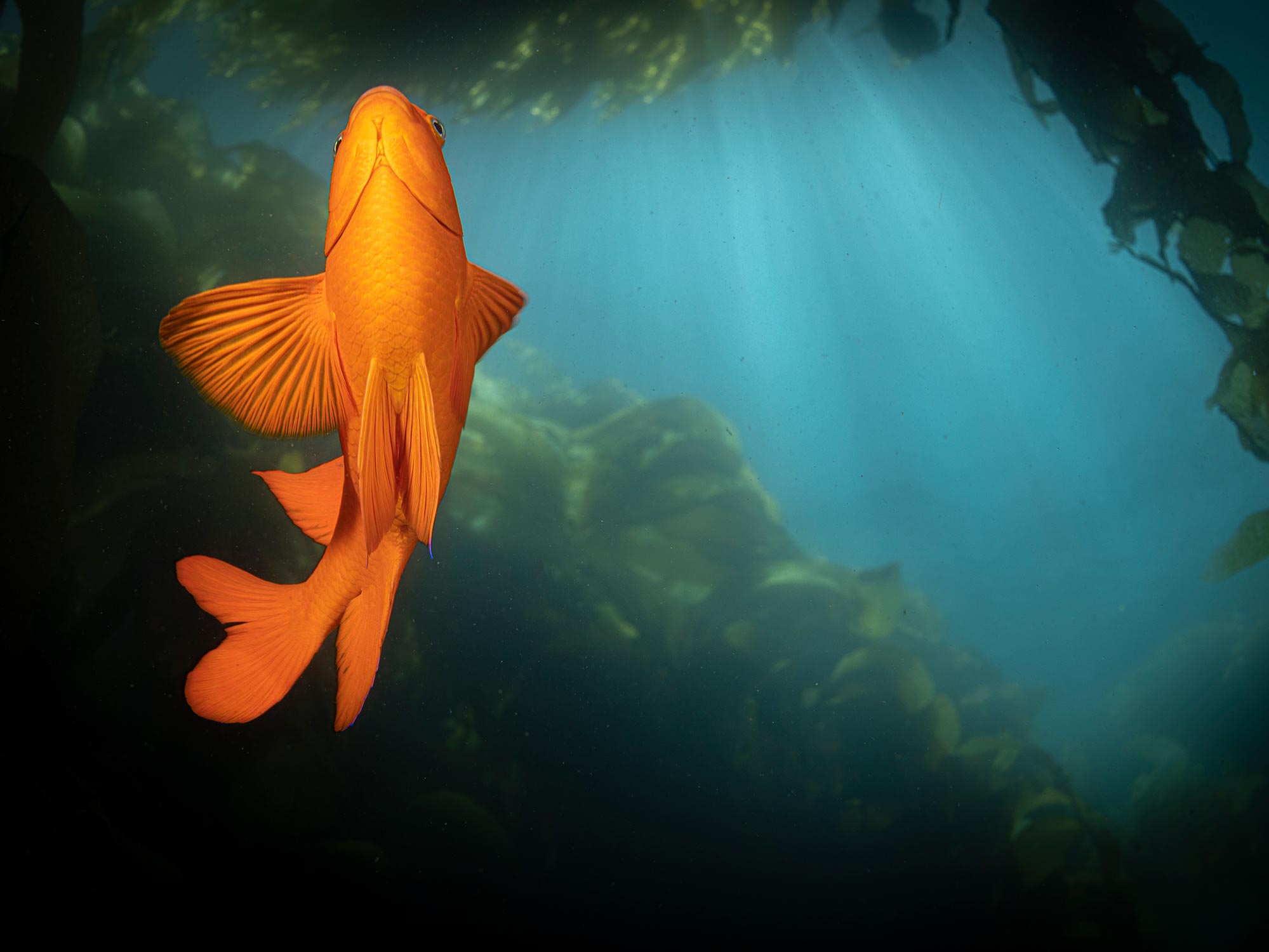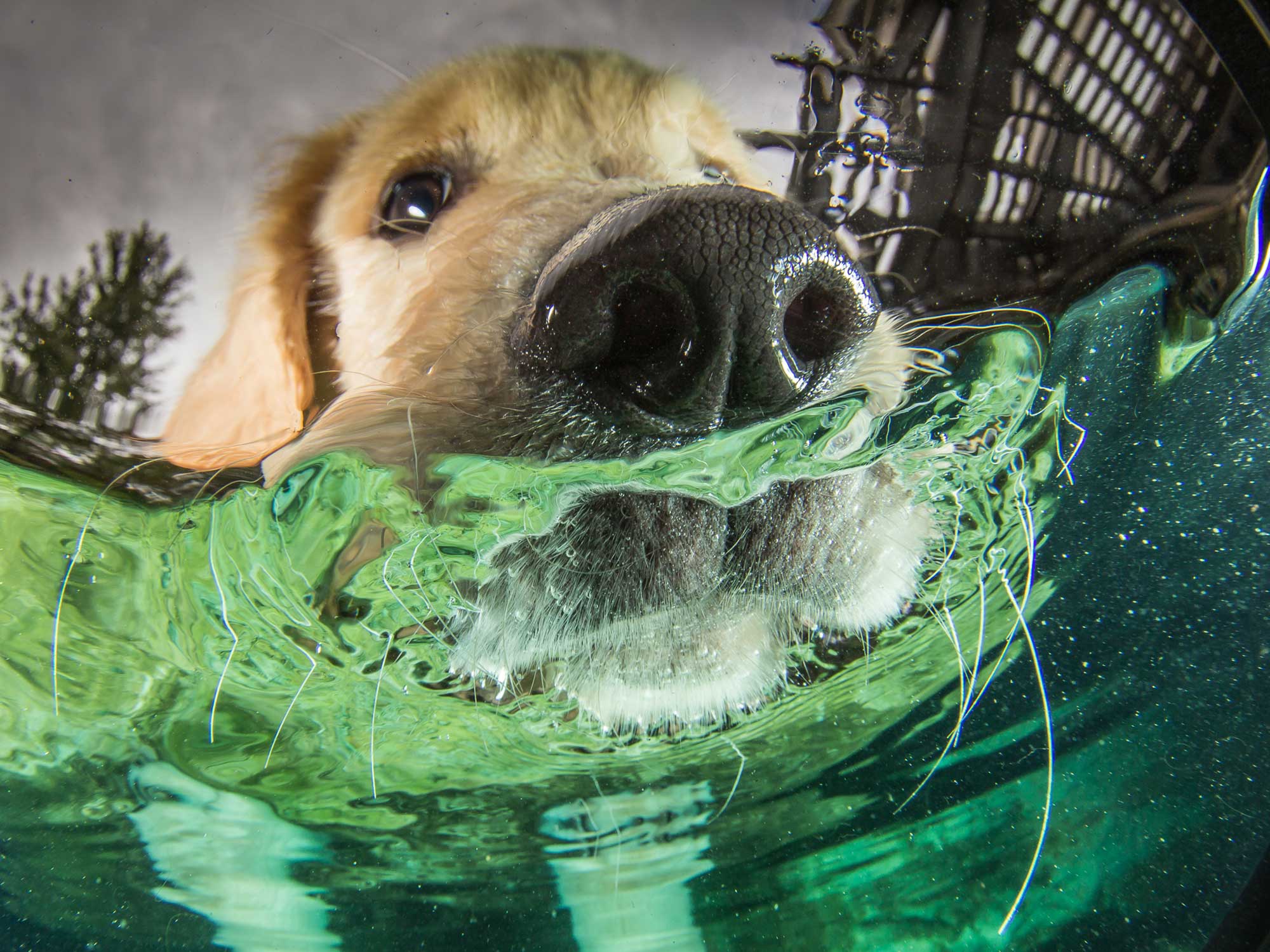Where
We see eels in all oceans, and they come in many colors. There are many species of eels, including freshwater varieties, though they are seldom photographed. Most images we see of eels will be the famous Morays, a term that divers often use as a catchall for many different varieties.

Bonaire is famous for having many varieties of eels. © 2022 Steve Miller
DSLR + Mirrorless
Mode: Manual for camera, set strobes to TTL.
ISO: 200-400, mostly we are using flash so a low ISO will work.
Aperture: Stopping down the lens is often used here for both wide angle and macro shots. Blue water backgrounds are hard to get when you are shooting down into a cave. F-8 all the way to F-16 will be within the strobe power, as long as you are close.
Shutter Speed: 1/125-1/160, flash synch.
Lens: 8mm to 100mm. Face shots and eyeball shots are beautiful, even a section of their skin can make nice image. But for the big ones it's nice to have a super wide lens, particularly a fisheye lens. Kit lenses work great at all ranges from macro to semi wide.
Point + Shoot
Mode: Manual or Aperture Priority. If you are shooting natural light, Program will work as well. A focus light or dive light will help here.
ISO: 100 to 200. If you have no light or strobe, expect to raise the ISO.
Aperture: F-8 will give you depth of field.
Shutter Speed: 1/125 to 1/200
Lens: Macro range of the face and mouth can be compelling, all the way up to full wide angle with or without a wide angle wet lens. Most kit lenses are in a perfect range for this.

Eels can become very curious about their reflection in your dome port, this allows for close up shots. © 2022 Steve Miller
Technique
Sometimes you will see an eel "on the move" across the reef, sticking its head into small caves and crevices. For the most part these are fun to watch, but difficult to photograph. Most of the time you will find them in their own cave, looking out with a threatening wide open mouth and bearing formidable teeth. Remember first, they just breathe this way and it is not necessarily a warning. If you are slow and careful with your approach, most eels will let you get very close. They are often loathe to leave their spot, so take your time and consider where you are going to put your body. In many cases you may have to hover almost upside down to avoid touching the reef. Unless you are very lucky, you will end up with a downward camera angle so a flash is important. Most of us will treat this like a macro shot regardless of lens, and stop down for depth of field. Eels are known to sometimes be fascinated by their reflection in your dome, so don't be surprised if it comes right up to your port, make sure your strobes will light him.
Strobes
You pretty much have to use strobes here, since you are pointing your camera into a dark cave. Setting to TTL will ensure a good exposure, but you can easily end up with a flat image with every shadow filled with light, color, and confusion. Moving your strobe heads around is key at this point. If you can get light onto their teeth from the side, and use shadow to black out the background, it will be easier to "release" the eel from the chaos of the coral and rock all around him.

Bring your strobes in close enough to light the face at close distances. © 2022 Steve Miller
Want the easy way to improve your underwater photography? Sign up for our weekly newsletter for articles and videos directly in your inbox every Friday:
Additional Reading
Common Questions about Strobe Firing, TTL, and Sync Speeds
Getting Correct Strobe Exposure with the Olympus Tough TG-5 and TG-6
Canon RF 14-35mm f/4L Lens Underwater Review [VIDEO]
Cuttlefish Underwater Camera Settings and Technique
Wide Angle Fisheye to Macro on the Same Dive with the Olympus Tough TG-6













